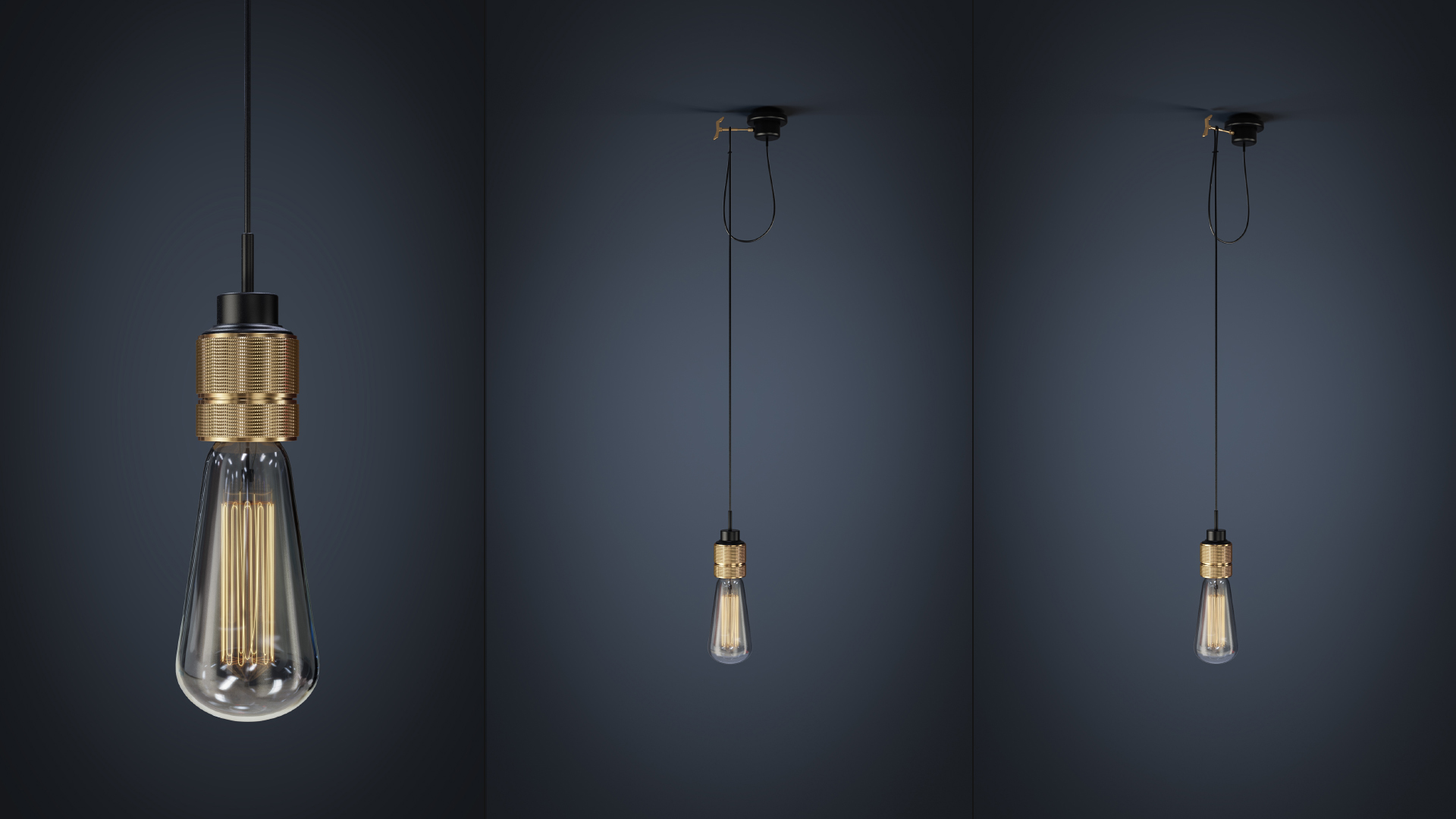

I then created a new emissive material that I applied to the light bulb. However, (back to rule #2, I didn’t use the emissive material as the light source to light the scene, hence the rectangular light). See the Lighting Tutorial for more info) Because I wanted the lamp shade to be something semi-transparent (a linen in this case) I knew that you would see the actual light bulb and thus wanted to give it an emissive material to give the effect of slowing through the linen.

Because I want the light to go both up and down, I simple click on the check box that makes this light double sided. Wireframe of Lamp - Notice Rectangular lightĪs you can see, I have a rectangular light (the golden colored rectangle) that fits inside the lamp. In this case, I used the following image.
#Light bulb vray rhino tv
First thing I do is take a screen shot (if doing a CPU monitor ) or google your favorite tv station or program and search through google images until you find something that you want to put on the TV screen.
#Light bulb vray rhino how to
With that being said, let’s look at how to make that material. Even during the daylight and with the lights on in the room you can still see the light being emitted from the TV or Monitor. Now turn the lights on and look from the same views. That is EXACTLY how tvs work, LED TVs, LCD Monitors, etc.

This should seem fairly obvious when take the time to think about it. You’ll notice that it sends a massive amount of light out projecting from the screen.

Then move to the side of the object or better, move behind it if possible. If you sit in a dark room, turn on a tv, or open your laptop. Let’s take a look at the TV screen first. You’d also be able to remember that I mentioned that about 1000 words ago at the beginning of this post, so congrats on either or both accounts. If you said the TV screen and the light bulbs on the wall sconces, you’d be correct. Essentially, we need more light or to increase our light in the scene? The increase of render settings will increase our rendering time (potentially substantially i.e 10-100 times) As a result, it’s suggested for best results, let’s use a light in the scene and only use emissive materials for the glowing that they’re meant for. Notice the “Splotchy-ness” and uneven lighting quality around the objects? That’s because our render settings are fairly low for the amount of light that is needed to calculate. Now to better show the emissive quality, I’m going to turn off the lights and the environmental light, leaving the material as the only thing in the scene emitting light (I know, I know I told you never to do this in Rule 2 above, but take a look and you can see why never to do this). Now let’s create an emissive layer and look at the default parameters. First I’ll render the scene that I’ve been using previously with a default material. There are a lot less parameters than the previous two layers, and luckily, they are all fairly straight forward. Now let’s jump right into it! First we’ll create a new material (which I’ll cleverly name “Emissive Material”). Do not use these materials as the sole lighting for a scene.These materials will increase render times, possibly to extreme amounts.I will bring up a few things to keep in mind when using a material that uses an emissive layer. These types of material can be used to create effects such as a neon sign, a glowing lamp shade, or a tv/computer screen. An emissive layer allows the material to emit light. The emissive layer is the final tutorial on the various layers for Vray.
#Light bulb vray rhino registration
It uses climate data files for accurate analysis in a range of climate related topics.Ok, so I just finished my Architectural Registration Exam study session, my wife is out for a while, and I’ve got a few hours before I’m meeting my sister and her boyfriend for dinner, (for those keeping track of my day)…let’s see if we can finish up the last material layer…Emissive Materials. The ladybug plugin is designed to be used in the early stages of the design process. This second option is available in the Ladybug plugin for Grasshopper. A more complex option is to analyze the amount of shadow cast over a defined period.This option will be able to tackle complex geometry and no simplification of the geometry is necessary. The simplest option is to use the render engine of Rhino in combination with an accurate sun position.There are several options for shadow analysis. For example sometimes sitting on a terrace in the summer some shadow can be preferred, but in autumn or spring more sun on the terrace can be preferred.įor an accurate analysis we need certain data: This option allows to analyze the amount of shadow cast onto your design over time. One of the simplest analysis options in Rhino and Grasshopper is the shadow analysis.


 0 kommentar(er)
0 kommentar(er)
